Nyasha Masamba
Hybrid Intelligent Testing in Simulation-Based Verification
May 19, 2022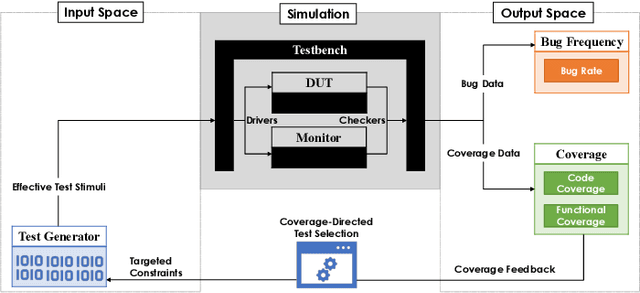
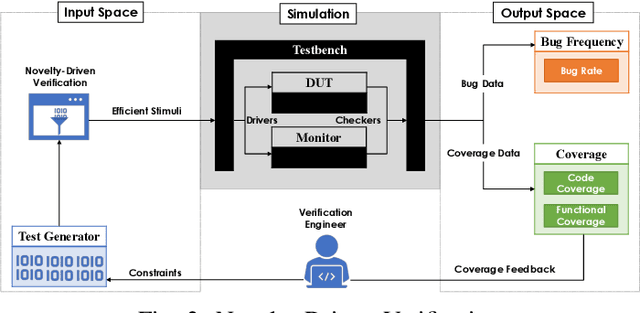

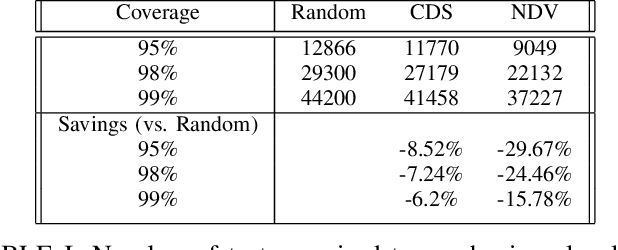
Abstract:Efficient and effective testing for simulation-based hardware verification is challenging. Using constrained random test generation, several millions of tests may be required to achieve coverage goals. The vast majority of tests do not contribute to coverage progress, yet they consume verification resources. In this paper, we propose a hybrid intelligent testing approach combining two methods that have previously been treated separately, namely Coverage-Directed Test Selection and Novelty-Driven Verification. Coverage-Directed Test Selection learns from coverage feedback to bias testing towards the most effective tests. Novelty-Driven Verification learns to identify and simulate stimuli that differ from previous stimuli, thereby reducing the number of simulations and increasing testing efficiency. We discuss the strengths and limitations of each method, and we show how our approach addresses each method's limitations, leading to hardware testing that is both efficient and effective.
Supervised Learning for Coverage-Directed Test Selection in Simulation-Based Verification
May 17, 2022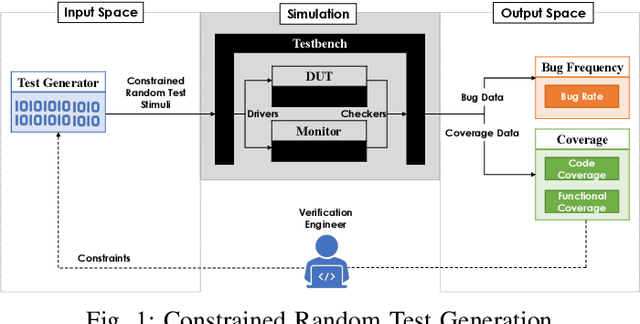

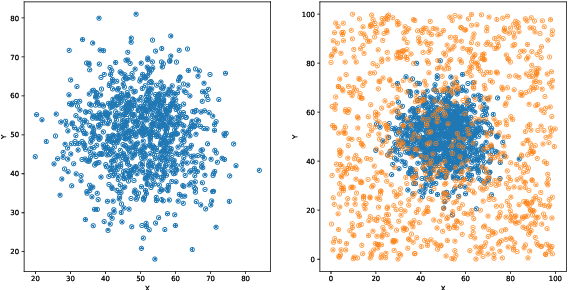
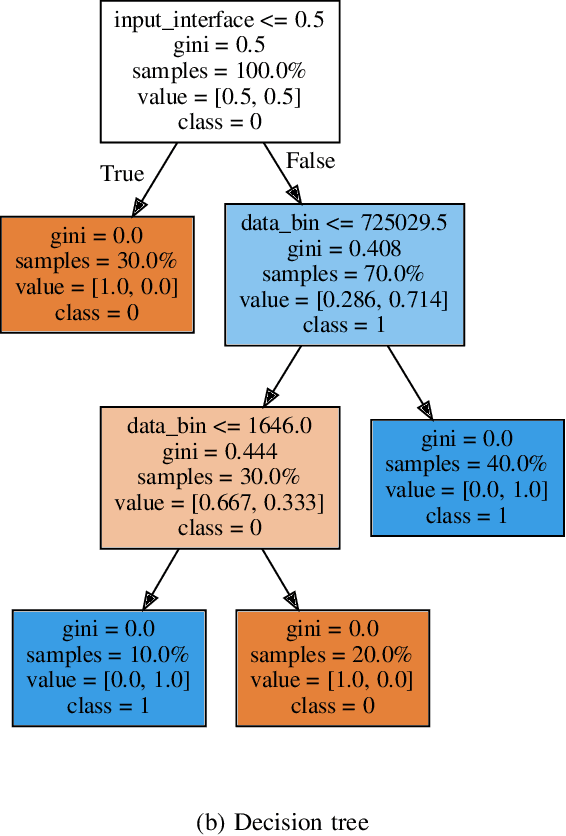
Abstract:Constrained random test generation is one the most widely adopted methods for generating stimuli for simulation-based verification. Randomness leads to test diversity, but tests tend to repeatedly exercise the same design logic. Constraints are written (typically manually) to bias random tests towards interesting, hard-to-reach, and yet-untested logic. However, as verification progresses, most constrained random tests yield little to no effect on functional coverage. If stimuli generation consumes significantly less resources than simulation, then a better approach involves randomly generating a large number tests, selecting the most effective subset, and only simulating that subset. In this paper, we introduce a novel method for automatic constraint extraction and test selection. This method, which we call coverage-directed test selection, is based on supervised learning from coverage feedback. Our method biases selection towards tests that have a high probability of increasing functional coverage, and prioritises them for simulation. We show how coverage-directed test selection can reduce manual constraint writing, prioritise effective tests, reduce verification resource consumption, and accelerate coverage closure on a large, real-life industrial hardware design.
 Add to Chrome
Add to Chrome Add to Firefox
Add to Firefox Add to Edge
Add to Edge